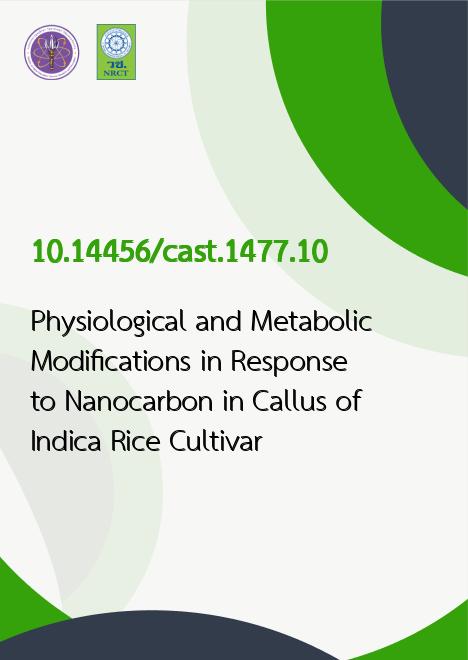
|
Physiological and Metabolic Modifications in Response to Nanocarbon in Callus of Indica Rice Cultivar |
|---|---|
| รหัสดีโอไอ | |
| Creator | Thanawat Sutjaritvorakul |
| Title | Physiological and Metabolic Modifications in Response to Nanocarbon in Callus of Indica Rice Cultivar |
| Contributor | Sutee Chutipaijit |
| Publisher | King Mongkut's Institute of Technology Ladkrabang |
| Publication Year | 2563 |
| Journal Title | Current Applied Science and Technology |
| Journal Vol. | 20 |
| Journal No. | 1 |
| Page no. | 106-116 |
| Keyword | callus, growth, metabolite, nanocarbon, rice g |
| URL Website | https://www.tci-thaijo.org/index.php/cast |
| Website title | https://www.tci-thaijo.org/index.php |
| ISSN | 2586-9396 |
| Abstract | Nanocarbon has been shown to be implicated in the response of plants to an assortment of positive or negative impacts. In the present research, the effects of nanocarbon on cell growth and secondary metabolite production on rice callus were studied. Different concentrations of nanocarbon (0-1000 mgl?1) were added into callus induction media to investigate the effects on the growth of callus, and secondary metabolite production in indica rice callus (Oryza sativa L. cv. Pathumthani1). The growth of callus was measured in terms of the size and weight of callus, and secondary metabolite production was determined based on the levels of total phenolic compounds and flavonoid production. The results showed that the callus induction, the callus growth and the secondary metabolite production in rice callus after treatment with nanocarbon were significantly different when compared to control (without treatment with nanocarbon). The rice callus treated with low (100 and 200 mgl-1) and moderate (400 and 600 mgl-1) level of nanocarbon displayed an enhancement in callus growth, total phenolic compounds and flavonoid production. However, the induction of callus, cell growth, and secondary metabolite production were decreased when rice callus was treated with high concentrations of nanocarbon (800 and 1000 mgl-1). The results of this research showed that the nanocarbon application of 400-600 mgl-1 had potential to induce the cell growth and secondary metabolite production. This research suggests further investigation in using different concentrations of nanocarbon on other plant species for potential pharmaceutical application. |